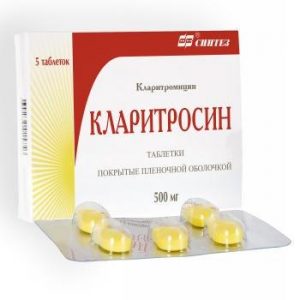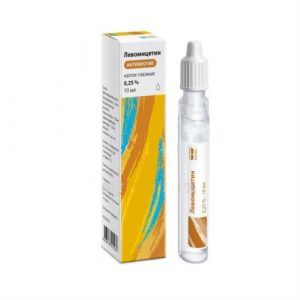Description
Pharmacological action
Combined antimicrobial agent.
Cefoperazone is a third generation cephalosporin that acts on sensitive microorganisms during their active reproduction by inhibiting the biosynthesis of mucopeptide cell wall. Sulbactam does not have clinically significant antibacterial activity (with the exception of Neisseriaceae and Acinetobacter), it is an irreversible inhibitor of most major -Lactamases, the presence of which is caused by the resistance of microorganisms to beta-lactam antibiotics. Sulbactam also binds to some penicillin-binding proteins, so the sulbactam / cefoperazone combination often has a more pronounced effect on sensitive strains than cefoperazone alone.
Sulcef is active against all microorganisms sensitive to cefoperazone. In addition, the drug is synergistic with respect to various microorganisms, in particular: Haemophilus influenzae, Bacteroides spp., Staphylococcus spp., Acinetobacter colcoaceticus, Enterobacter aerogenes, Escherichia coli, Proteus mirabilis, Klebsiella pneumoniae, Morganella morobereroberund, Citganroberoberund, diversus.
The in vitro preparation is active against a wide range of clinically significant microorganisms, including gram-positive microorganisms: Staphylococcus aureus (producing and not producing penicillinase), Staphylococcus epidermidis, Streptococcus pneumoniae, Streptococcus pyogenes (group A hemolytic streptococcus), Streptococcus agalactiae ( hemocolytic group B) most other strains of -hemolytic streptococci, many strains of Streptococcus faecalis (enterococci) Gram-negative microorganisms: Escherichia coli, Klebsiella spp., Enterobacter spp., Citrobacter spp., Haemophilus influenzae, Proteus mirabilis, Proteus vulgaris, Proteus vulgaris malisis vulgaris vulgaris ., Serratia spp. (including S. marcescens), Salmonella spp., Shigella spp., Pseudomonas aeruginosa, Acinetobacter calcoaceticus, Neisseria gonorrhoeae, Neisseria meningitidis Bordetella pertussis, Yersinia enterocolitica anaerobic gram-negative rods, including Bacteroides spp. (including Bacteroides fragilis), Fusobacterium spp. Gram-positive and Gram-negative cocci (including Peptococcus spp., Peptostreptococcus spp. and Veillonella spp.) Gram-positive rods (including Clostridium spp., Eubacterium spp. and Lactobacillus spp.).
Indications
Treatment of infectious and inflammatory diseases caused by microorganisms sensitive to the drug:
– upper and lower respiratory tract infections
– urinary tract infections
– intraabdominal infections (including cholecystitis, peritoneum cholangitis – srdlitis srd)
– meningitis
– infections of the skin and soft tissues
– infections of the bones and joints
– inflammatory diseases of the pelvic organs (including endometritis)
– genital tract infections
– gonorrhea
Contraindications
– hypersensitivity to the components of the drug
– hypersensitivity to penicillins and other cephalosporins.
Recommendations for use
The drug is administered in / in or / m.
Adults are prescribed 2-4 g / day with an interval of 12 hours for severe, long-term infections – 8 g / day. The maximum daily dose is 8 g.
Patients with chronic renal failure (CC less than 30 ml / min) require dose adjustment: with KK 15-30 ml / min, the drug is prescribed 1 g 2 times / day, with KK less than 15 ml / min – 500 mg 2 times / day.
In severe biliary obstruction, severe liver disease, a dose adjustment may be required, the maximum daily dose in such cases is 2 g. In patients with impaired liver function and concomitant renal impairment, monitoring of cefoperazone concentration in blood plasma and dose adjustment in case of necessary. If cefoperazone concentration is not regularly monitored in such cases, then the daily dose should not exceed 2 g.
Children are prescribed the drug at a dose of 40-80 mg / kg / day in 2-4 doses for severe, long-term infections – 160 mg / kg / day The maximum daily dose is 160 mg / kg / day. If it is necessary to administer more than 80 mg / kg / day (calculated by the content of cefoperazone), a dose increase is achieved due to the additional administration of cefoperazone.
Rules for the preparation and administration of
solutions For iv administration, the contents of the vial are dissolved in an adequate volume of 5% dextrose solution, 0.9% sodium chloride solution for injection or sterile water for injection, diluted to 20 ml with the same solution and injected intravenously 15-60 min iv in-stream for 3 min For intramuscular administration, sterile water for injection is used for dissolution. To obtain a cefoperazone concentration of 250 mg / ml or more, dilution is carried out in 2 stages: with sterile water, then with a 2% lidocaine solution to obtain a 0.5% solution of
Special instructions
In patients receiving beta-lactam antibiotics (including cephalosporins), cases of anaphylactic reactions are described. The risk of such reactions is higher when there is a history of hypersensitivity reactions. If an allergic reaction occurs, it is necessary to cancel the drug and prescribe adequate therapy.
In severe anaphylactic reactions, emergency administration of epinephrine is necessary. According to indications, oxygen is prescribed, iv – GCS and provide airway patency, including intubation.
During treatment with cefoperazone (as with other antibiotics), vitamin K deficiency develops in rare cases, apparently due to the suppression of the normal intestinal microflora that synthesizes this vitamin. The risk group includes patients receiving malnutrition, suffering from malabsorption (for example, with cystic fibrosis) and who have been on iv artificial nutrition for a long time. In such cases, as well as in patients receiving anticoagulants, it is necessary to control prothrombin time and, if indicated, to prescribe vitamin K.
With prolonged treatment with Sulcef (like other antibiotics), excessive growth of insensitive microorganisms is possible.
Patients require close medical supervision during therapy.
With prolonged therapy, it is recommended to periodically monitor the function of internal organs (including kidneys, liver) and the hematopoietic system.
Given a wide range of antimicrobial activity, adequate monotherapy can be performed.
With the simultaneous use of aminoglycosides, renal function should be monitored.
For obstruction of the biliary tract, severe liver failure (maximum daily dose – 2 g), dose adjustment of Sulcef and control of the concentration of cefoperazone in blood plasma are required.
During the treatment period, false-positive results of determination of glucose in the urine when using Benedict or Feling solutions, a false-positive Coombs reaction can be observed.
Pediatric use
Treatment of premature infants is performed if the expected benefits of the therapy outweigh the potential risk. When using the drug in young children, careful monitoring of the functions of internal organs (including kidneys, liver) and the hematopoietic system is required.
Composition
1 vial contains:
Active ingredients: cefoperazone (in the form of sodium salt) – 1 g sulbactam (in the form of sodium salt) – 1 g.
Overdose
Symptoms: epileptic seizure.
Treatment: sedation. With the development of anaphylactic shock – in / in the introduction of epinephrine, oxygen inhalation, the use of corticosteroids.
Storage conditions
The drug should be stored out of the reach of children, protected from light, at a temperature not exceeding 25 ° C.
Expiration
2 years.
Active ingredient
Cellulose growth. [Sulbactam]
Dosage form
solution for injection and infusion




